Page of Contents
Omega -3 Fatty Acids can do wonders for your health
Omega -3 Fatty Acids – General Facts and Information
Omega -3 Fatty Acids Basics
What is omega 3? Wondering what is the omega 3 definition?
Omega 3 is a convenient way of referring to omega 3 fatty acids, which belong to a family of unsaturated fatty acids. What these fatty acids have in common to one another is a final carbon-carbon double bond in the n-3 position. What does that mean? The n-3 position refers to the third bond from the fatty acid’s methyl end.
That, of course, is technical information which does not tell us the functions or importance of omega 3 fatty acids.
Omega-3 Fatty Acids Benefits
Basically, Omega -3 Fatty Acids are important nutrients which play crucial roles in the functions and health of various parts and processes in the human body. These include, most notably, brain health and heart health. In fact, a significant proportion of brain and heart tissue comprises of omega 3’s.
What are omega-3 fatty acids benefits on health? These fatty acids also play important roles in skin health, joint health, hair health, as well as immune function. Omega 3 fatty acids have powerful anti-inflammatory properties, too. Further, it has been discovered that they are critical for normal growth and development in children. This is why they are referred to as essential fatty acids.
What is omega 3’s link to serious diseases? The truth is, shortages of omega 3 fatty acids in one’s diet have been linked to heart and cardiovascular disease, cancer, joint ailments, mental health conditions, Alzheimer’s disease, among others.
Types of Omega 3 Fatty Acids
There are many types of omega 3 fatty acids, with the ones most well-known for human health being alpha-linolenic acid (ALA), eicosapentaenoic acid (EPA), and docosahexaenoic acid (DHA); these are polyunsaturated fatty acids.
What is omega 3 fatty acids’ physical structure? In gist, ALA has 3 double bonds in a carbon chain of 18 carbon atoms; EPA has 5 double bonds in a carbon chain of 20 carbon atoms; while DHA has 6 double bonds in a carbon chain of 22 carbon atoms.
How is this information important in telling us what is omega 3? Basically, what we need to know is that the body cannot synthesize or make its own omega 3 fatty acids; however, it is able to form DHA and EPA (which are longer) using ALA (which is shorter). What is critical, though, is that such conversion is limited, and also takes place competitively with omega 6 fatty acids, which are derived from linoleic acid.
Omega 3 and Omega 6
Both omega 3 and omega 6 are critical for good health, and must be obtained from omega-3 fatty acids food. The problem is that, because of our poor modern day diets, many people are today deficient in the very important omega 3 oils. Many studies show this fact.
To make things worse, we now consume loads of unhealthy fats – saturated fats, vegetable oils which are very high in omega 6 fatty acids, as well as trans fats. Our bodies then struggle to make use of the already small amounts of omega 3 fatty acids which it is provided.
Conclusion
Thus, to enjoy good and optimal health, it is imperative that we make sure we are consuming good amounts of high-quality omega 3 fatty acids. Limiting omega 6 and unhealthy fat intake would also be an important step.
(Many people today consume omega 3 fatty acids supplements, which typically come in liquid or pill/capsule form.)
Omega 3 EPA DHA
Omega 3 EPA DHA are two types of omega 3 fatty acids which are critical for good health and many functions of the human body, including the brain, joints, skin, heart and cardiovascular system.
Omega 3 EPA DHA are two types of omega 3 fatty acids which are critical for good health and many functions of the human body.
Omega 3 fatty acids belong to a family of unsaturated fatty acids. These fatty acids have a final carbon-carbon double bond in the n-3 position; the n-3 position refers to the third bond from the fatty acid’s methyl end.
EPA, long name eicosapentaenoic acid, and DHA, long name docosahexaenoic acid, are polyunsaturated fatty acids. EPA has 5 double bonds in a carbon chain of 20 carbon atoms, while DHA has 6 double bonds in a carbon chain of 22 carbon atoms.
Both DHA and EPA are important for various healthful purposes, and both cannot be made or synthesized by the human body. Thus, these omega 3 fatty acids need to be consumed as part of one’s diet.
It is possible, however, for omega 3 EPA DHA to be formed using alpha-linolenic acid (ALA), another type of omega 3 fatty acid which has a shorter molecular structure. It must be noted, though, that such conversion only takes place on a limited basis, and omega 6 fatty acids can also interfere with it. ALA, too, must be consumed as part of one’s diet.
Omega 3 EPA DHA are associated with many different health benefits, in particular on heart and cardiovascular health, brain health, joint health, skin health, as well as hair health. They have potent anti-inflammatory properties and help to ward off serious illnesses like cancer and Alzheimer’s disease, too.
DHA, specifically, seems to be critical for the normal development of vision and the nervous system in infants. It also helps to lower blood levels of triglycerides. In addition, laboratory studies have suggested that DHA can kill cancer cells, while animal studies suggest that it can help to inhibit cancer. Further, research has indicated that children who suffer from attention deficit disorder, or ADD, appear to have low levels of DHA.
(Many people nowadays consume omega 3 fatty acids supplements, which usually come in the form of omega-3 fatty acids capsules/ pills or a liquid.)
A well-balanced omega 3 vs omega 6 fatty acid ratio helps to bring about optimal health and vitality. Modern day diets, however, have skewed the ratio heavily in favor of omega 6’s, contributing to many health conditions.
What is the story of omega 3 vs omega 6 fatty acids?
Both groups are polyunsaturated fats. Omega 3 fatty acids include alpha-linolenic acid (ALA), eicosapentaenoic acid (EPA), and docosahexaenoic acid (DHA), while omega 6 fatty acids include alpha-linolenic acid and arachidonic acid.
More attention had always been given to the importance of omega 6’s, with more focus and research being carried out on omega 3 fatty acids only in recent decades.
The truth is, both omega 3 and 6 fatty acids are needed for good and optimal functioning and health of the human body. Both cannot be synthesized or made by the body, and must be consumed as part of our diets. Omega 6 fatty acids, for example, play a role in supporting dermal integrity, renal function, as well as parturition.
The problem with modern day diets, however, is that our ratio of omega 3 vs omega 6 consumption is badly imbalanced. It has been put forth that a healthy ratio of omega 3 to omega 6 could range from 1:4 to 1:1; however, it has also been suggested that typical modern day diets could be having staggering ratios ranging from 1:10 to 1:30.
For example, we are today much more likely to eat grain-fed animals as supposed to grass-fed animals, and the former has relatively more omega 6, with the latter having relatively more omega 3. Similarly, farmed-raised salmon has relatively high levels of omega 6’s, too. Many heavily consumed vegetable oils are also high in omega 6 fatty acids.
A proper intake ratio of omega 3 vs omega 6 helps to maintain heart and cardiovascular health. It also helps to regulate inflammatory responses in the body, with omega 6 fatty acids tending to promote inflammation and omega 3 fatty acids tending to reduce it.
A bad omega 3 to omega 6 ratio can negatively affect the metabolic function of the body. It can also cause inflammation, a condition which is linked to many health ailments and diseases. Arachidonic acid, in particular, is highly inflammatory, and grain-fed beef and farm-raised salmon both have lots of this acid.
Worse still, because of the high amounts of omega 6’s we are ingesting, our bodies struggle to use the already limited healthy omega 3 fatty acids for important purposes.
For information, here are the omega 3 vs omega 6 ratios of some types of oils, taken from Wikipedia.org.
Flax Oil – 3:1
Soybean Oil – 1:7
Corn Oil – 1:46
Canola Oil – 1:2
Olive Oil – 1:13
Sunflower oil and peanut oil has no omega 3 fatty acids, while cottonseed oil and grapeseed oil have almost none.
The point must also be raised that canola oil, olive oil and peanut oil have about 80% monounsaturated fatty acids (recall that both omega 3 and omega 6 are polyunsaturated fatty acids). This means that these oils have relatively low levels of omega 3’s and omega 6’s and would thus not be useful food sources for addressing omega 3 vs omega 6 imbalances. Try using omega-3 fatty acids food.
Flax oil, on the other hand, looks useful for helping to bring about the necessary healthful balance.
Remember – it’s about balance, and while we want to consume more omega 3 fatty acids to boost our health, we cannot be thinking of loading ourselves up only with omega 3’s while completely not consuming omega 6’s.
Do We Need Omega 3? What Can a Deficiency Cause?
Do you need omega 3 oils or fatty acids? You most certainly do, as these essential fatty acids play critical roles in brain health, heart and cardiovascular health, as well as in warding off serious diseases.
Do You Need Omega 3 Fatty Acids?
As a matter of fact, you do! Omega 3 fatty acids like DHA and EPA play many very important roles in the human body. Most notably, the importance of omega 3 fatty acids lies in their great contribution to brain and cardiovascular function and wellbeing. In fact, significant proportions of brain and heart tissue are said to comprise of omega 3 fatty acids.
On top of that, these essential fatty acids also have a part to play in joint health, skin health, as well as hair health. Not only that, they have powerful anti-inflammatory properties and even help to ward off serious ailments like Alzheimer’s disease and cancer.
In looking at the question “do you need omega 3 fatty acids”, it is also important to look at another side of the story – omega 6 fatty acids. The truth is, both omega 3 and omega 6 fatty acids are critical for good health. Both cannot be made by the human body, and must be obtained in one’s diet.
The main problem, however, is that our modern day diets are largely skewed in favor of omega 6 fatty acids, upsetting the balance or ratio necessary for optimal health. For example, we consume a lot of grain-fed animals, farm-raised fish, as well as vegetable oils today, and these omega-3 fatty acids food all have relatively high amounts of omega 6 fatty acids.
Having too much omega 6 and too little omega 3 can negatively affect the metabolic function of the body, and also promote unhealthy inflammatory responses. This weakens the body. To make matters worse, chronic inflammation is linked to many serious diseases, including cardiovascular disease and cancer.
Further, over-consumption of omega 6 fatty acids interferes with our body’s ability to make use of omega 3 fatty acids. As it is, we are already consuming too little omega 3’s, and this just makes matters worse.
So, do you need omega 3 fatty acids? You most certainly do. And, in view of the fact that most of us today are severely lacking in these essential fatty acids, then all the more you do.
Omega 3 Fatty Acid Deficiency :
An omega 3 fatty acid deficiency can manifest itself through many different types of health conditions and ailments.
Omega 3 fatty acids like DHA and EPA have a hand in the function and health of many different parts of the human body. Most notably, they contribute greatly to brain health, heart health, joint health, and even skin health and hair health. Indeed, a significant proportion of heart tissue and the human brain is said to be made up of omega 3 fatty acids.
In addition, these essential fatty acids also help to lift moods, regulate blood pressure, lower cholesterol and triglyceride levels, boost immune function, prevent strokes and heart attacks, as well as keep cancer and cardiovascular disease at bay, among a host of other health benefits.
Numerous studies have shown that persons suffering from depression are more likely to have an omega 3 fatty acid deficiency. Persons who have arthritis are also likely to have reduced levels of omega 3 in their blood and joint fluid. Poor skin health is a possible sign of a deficiency in omega 3, too.
Specifically, DHA deficiency has been linked with Alzheimer’s disease, and certain congenital diseases like Zellweger’s syndrome and infantile Refsum’s disease. In addition, children who suffer from attention deficit disorder (ADD) seem to have lower levels of DHA. Further, babies who are born prematurely but who are not breast-fed often suffer from a deficiency in DHA, too.
The biggest problem, really, is that because of our poor modern day diets, most of us probably suffer from an omega 3 fatty acid deficiency. Many studies actually show this point. In fact, as much as 60% of the American population could be deficient in these very important essential fatty acids.
To make matters worse, we eat a lot of unhealthy fats – trans fats and saturated fats, as well as vegetable oils which are high in omega 6 fatty acids. This hampers our body’s ability to make use of the already small amount of omega 3 fatty acids which we are consuming, thereby worsening the omega 3 fatty acid deficiency problem.
What Dosage, and How Much of Omega 3 Fatty Acids to Take?
What omega 3 dosages should we be taking on a daily basis? How much omega 3 fatty acids should we consume?
The omega 3 fatty acids DHA and EPA have been well-researched and known to have many positive health effects on the body. They cannot be synthesized by the human body, and must be taken as part of one’s diet. Another omega-3 fatty acid benefits, ALA, is less well-known, although the body is able to convert ALA into DHA and EPA, albeit on a limited basis. ALA, too, must be consumed as part of the diet.
There is no clear indication of what DHA or EPA omega 3 dosage should be taken for disease prevention or optimal health and wellbeing. Much research which has looked into the health benefits of DHA and EPA has used at least 3 grams (total per day) of these omega 3 fatty acids.
DHA and EPA are richly found in fatty or oily fish, and persons who eat such omega-3 fatty acids food several times a week should presumably be able to get their fix of these essential fatty acids. There is, however, the problem of contamination – most fish today contain undesirable levels of toxins and heavy metals, in particular mercury.
When taking a plant or vegetarian sources of omega 3 fatty acids, such as flaxseed oil (which is an excellent oil, by the way), varying omega 3 dosages have also been quoted by different sources, ranging from 1 tablespoon per day (15ml) to a lot more.
One thing which you must note – if you are choosing to use cod liver oil to fulfill your omega 3 fatty acid needs, please exercise extreme caution. This is because cod liver oil is also rich in vitamin A. While this vitamin is critical for good health, taking it directly in supplemental form can lead to overdose, which would be very dangerous. Taking too much vitamin A also has adverse effects on the body’s ability to use vitamin D.
In general, when taking omega 3 fatty acids supplements, you could just follow the dosage instructions given with the product. If you need to go higher or take omega 3’s for therapeutic purposes to treat certain health conditions, it may be a good idea to consult with a suitable natural health care practitioner. Usually, for such treatment purposes, relatively high omega 3 dosages are used. As with anything, no matter how healthful, you can certainly take too much omega 3, and caution should be exercised if you need or wish to take very high doses.
In any case, as with taking any supplements or herbs, it is a good idea to start small and slowly works your way up, taking note of how your body responds to it. This commonsensical approach can go a long way in helping to prevent undesirable or adverse reactions.
How Much Omega 3 Fatty Acids to Take?
How much omega 3 should we be taking each day in order to harness its many health benefits? Is there an ideal omega 3 dosage?
DHA and EPA are two types of omega 3 fatty acids which have been very well studied and known to have many health benefits and therapeutic purposes. As they cannot be made by the human body, we need to consume these essential fatty acids in our foods, or in supplemental form. DHA and EPA are most richly found in fish oil.
ALA, a type of omega 3 fatty acid which is found in certain vegetable oils, can actually be converted by the body into DHA and EPA. Such conversion, however, is said to only take place on a limited basis. Further, if we consume too much omega 6 fatty acids, which most of us do, such conversion is even more hampered.
There is no clear indicate of how much omega 3 fatty acids we need to take, either for disease prevention or treatment purposes. A lot of research which have studied the healthful properties of DHA and EPA has used an omega 3 dose of at least 3 grams per day (total of DHA and EPA). Some studies, however, used much more.
As for vegetarian or vegan sources of omega 3 fatty acids, such as flax seed oil, different sources suggest varying dosages, from as little as 1 tablespoon each day (15 ml) to much more.
When using omega 3 fatty acids supplements, you could simply follow their dosage instructions on how much omega 3 to take. If you wish to take more omega 3’s for treatment or therapeutic purposes, it may be a good idea to seek the expertise of a qualified natural health care practitioner. For such purposes, relatively high doses of these essential fatty acids are usually used; caution should thus be exercised, as too much of anything can be harmful.
A good idea when taking supplements and herbs is to start low and gradually increase your dosage, giving time for your body to adjust and allowing you to observe how it reacts. This simple approach can greatly help to prevent unwanted consequences.
Potential Side Effects, Dangers, and Overdose
Omega 3 Side Effects, Adverse Reactions and Interactions
Are there any omega 3 fatty acids side effects which we should be wary of?
Generally speaking, omega 3 fatty acids are critical for many aspects of health, and, as long as we do not take way too much omega 3 (too much of anything is a bad thing), they are safe nutrients to consume. There are a few things for us to take note of, though.
Firstly, persons who are taking blood-thinning drugs like aspirin and warfarin should be very careful about taking too much omega 3 fatty acids, as these essential fatty acids also have blood-thinning effects. In very large amounts, omega 3’s could thus increase the risk of abnormal bleeding and hemorrhagic strokes.
Other reported possible omega 3 fatty acids side effects tend to be associated with fish oil, which is rich in the omega 3 fatty acids DHA and EPA.
There are some reports that blood levels of sugar may increase in some persons who consume fish oil. Thus, those with diabetes may want to check with a qualified natural health practitioner before taking fish oil. Do note that fish oil has in fact often been reported to be helpful for this health condition.
Some research suggests that this possible omega 3 side effect – blood sugar elevations while using fish oil – could be prevented with the addition of vitamin E to the oil, or by undertaking moderate exercise thrice per week, 30 min each time.
Vitamin E is often added to fish oil supplements in order to prevent the oxidative damage which fish oil quite easily suffers. Fish oil which is damaged by oxygen may have undesirable effects on health, although this has not been conclusively shown.
It has also been suggested that some persons, while taking fish oil supplements, actually experience increases in low-density lipoprotein (LDL) cholesterol (the “bad” cholesterol) levels; however, this possible omega 3 side effect is actually contrary to frequent evidence that fish oil in fact lowers this type of cholesterol.
A couple of ways to counteract this possible omega 3 side effect has been shown in studies. Research has suggested that consumption of 15g of pectin each day together with fish oil supplements can help to bring about decrease in LDL cholesterol; it has also suggested that garlic supplements can help to prevent the possible LDL cholesterol increase. Logically, fresh garlic should also help.
The following points are not fish oil or omega 3 fatty acids side effects per se, but are possible problems which could be associated with consuming fish oil.
One important thing to note if you are hoping to get your fix of omega 3 fatty acids from fatty fish – farm-raised fish tend to have relatively low levels of omega 3’s and relatively high levels of omega 6 fatty acids. Too much omega 6 and too little omega 3 promotes inflammation in the body, which can then lead to a host of serious diseases, including heart and cardiovascular conditions. The same is true for grain-fed animals. If you are looking to get omega 3’s from fish and animals, look for wild-caught fish and grass-fed (and chemical-free) animals.
Another huge problem with fish oil is that almost all fish today are contaminated with mercury, pesticides like PCBs, other heavy metals, as well as other toxins. It is so of preponderant importance that, when choosing fish oil supplements, you select one which is purified and certified free of these chemicals and toxins.
One issue to notice concerning omega-three facet effects – it should be inadvisable to use cod liver oil to get your fix of omega-three fatty acids. This is because cod liver oil has a lot of vitamin A. While this vitamin is critical for good health, taking too much in supplemental form can cause dangerous toxic overdose; too much of this vitamin also hampers the body’s ability to use vitamin D. Thus, do be careful here.
Fish oil omega-3 fatty acids capsules and pills may additionally accompany minor animal oil facet effects or adverse reactions, such as bloating, belching and bad breath. One possible way to reduce these effects is to start with a low dose and gradually work your way up; in fact, this is a good suggestion to follow when taking any herbs and supplements.

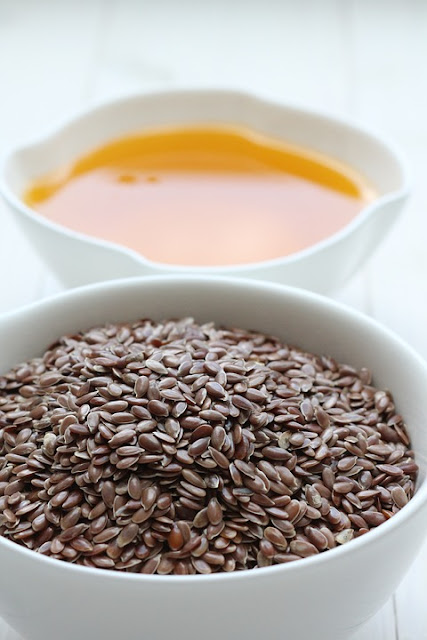
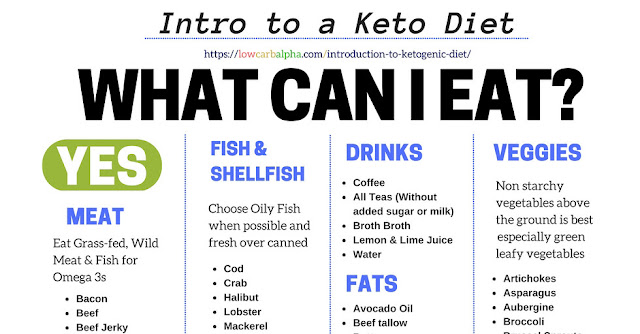
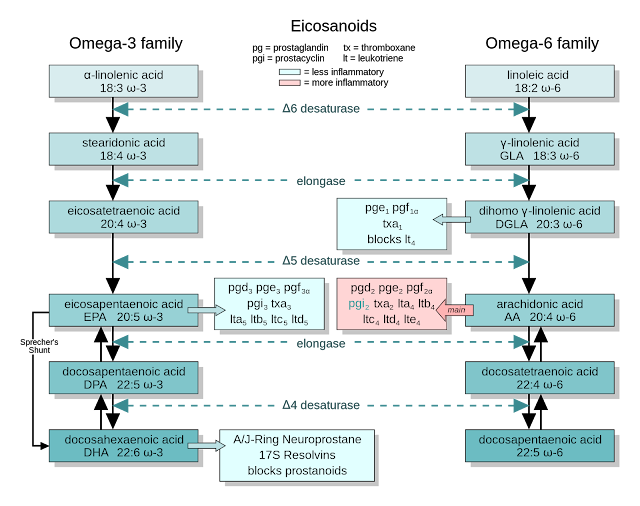

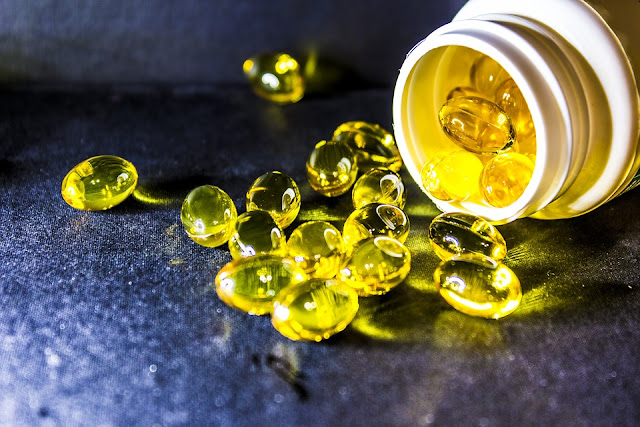
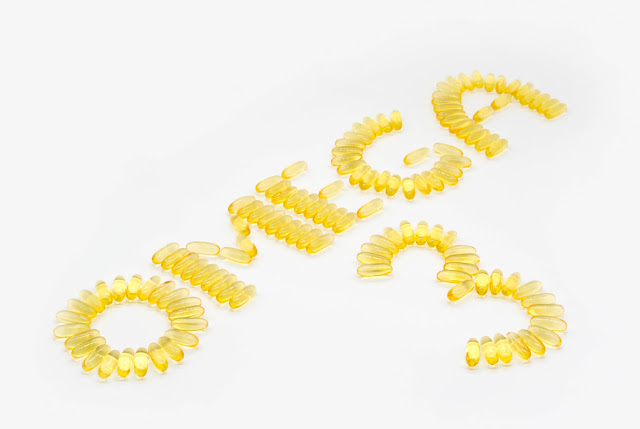
Leave a Reply